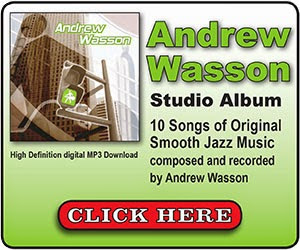Get a Better Electric Guitar Sound on Your Recordings...
Courtesy of Jesse Sterling Harrison...
Guitarists are rarely content with the typical signal path of fingers - to guitar - to mic - to mixing board. Here are a few studio tricks to help the "electric guitar mad scientist," in you...
You might say the electric guitarist is a mad scientist of sorts in the music world. Oddball tunings, e-bows, beer-bottle slides, racks of gadgets and capos that cover only four strings are just another day at the office for a guitar player.
This is totally appropriate for musicians who spent their teen years not so much practicing the guitar as conducting experiments on it.
You don’t see a lot of cellists plugging in wah-wah pedals, or drummers adding effects loops to their hi-hats. These flights of fancy continue in the studio, where guitarists are rarely content with the typical signal path of fingers to guitar to mic to mixing board. Of course, not all of those studio tricks actually sound good. Here are seven ways to add the lightning to the monster sound you’re building.
1. Use a "prepared guitar"
Avant-garde classical composers (and psychedelic bands) were always messing around with pianos, stuffing things inside them, or doing weird mods to the strings and pedals. This resulted in pieces for “prepared piano.” Well, how about a “prepared guitar”?
The easiest mod to your guitar is to add some sort of muting, such as by threading a length of wound string through all six of your strings or inserting a roll of paper or cloth underneath the strings near the bridge. These experiments can make a clean-toned guitar sound more like a thumb piano or Indonesian instrument, or it can add a bizarre element to fast lead work, removing any stray string noise and also the sustain.
2. Use an acoustic as a phantom guitar
Many great recordings have lots of strange sounds and weird artifacts hidden deep in the mix. You have to search for them, but they’re present and give the recording a lot of its ambience.
When playing a louder electric track, double that part on an acoustic and mix it so it’s barely audible. This trick even works on the heaviest of heavy metal, providing shimmer, depth, and color to the track, and listeners won’t even know it’s there.
3. Record your electric unplugged
It’s rare to hear an unplugged electric on a recording (besides this one), but it’s always an option. Usually this trick sounds best as the previous one did when doubling an existing electric track.
Of course, this one need not be tracked separately. Just throw a mic near your guitar while you’re tracking and put the amplifier in a different room. As with the phantom acoustic, mix it low. When you suddenly strum or pick harder, the unplugged guitar will rise to the surface of the mix, creating an organic or “gradient” effect in which the sound changes throughout the recording.
4. Use a low-frequency mic on your guitar cabinet
As a guitar player who owns a studio, I hate to see gear sitting around. I paid a premium to get good equipment, so I’m pressing it into service whenever possible. Low-frequency microphones intended for bass guitar cabinets or kick drums can (and should) be used on guitar cabinets as well to capture all grit and bass frequencies coming from your guitar.
In general, it always pays to mic any guitar cabinet twice so you can mix the two sounds – or just delete the one that sounds worse.
5. Use a bass cabinet
Of course, you can always just use the entire bass rig for your guitar track. Especially if you’re using a stereo effect like a delay or chorus pedal, run one input into a bass cabinet and the other to your guitar rig, and mic up both. You might need to mix the bass cab a little lower to avoid drowning out the bass guitar, but that low-end grind will be there in the mix.
6. Double your tracks with different guitars
If you have two radically different electric guitars on hand, double your tracks using both instruments through the exact same rig – even if the second guitar sucks. At key moments, you can drop out the main guitar and let the weird one come to the forefront.
7. Use an octave pedal
Another subtle effect can be obtained by using an octave pedal and adding an octave up or down on your guitar tracks. This effect can be a little too much throughout a five-minute power ballad, but it can be amazing when deployed only during a chorus or a guitar solo section, turning a key section of your song into a mind-bending head trip.
Jesse Sterling Harrison is an author, recording artist, and part-time farmer. He lives in Massachusetts with his wife, three daughters, and a herd of ducks.










